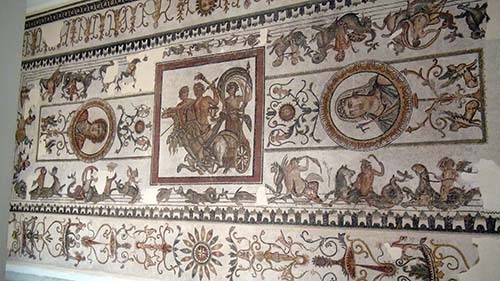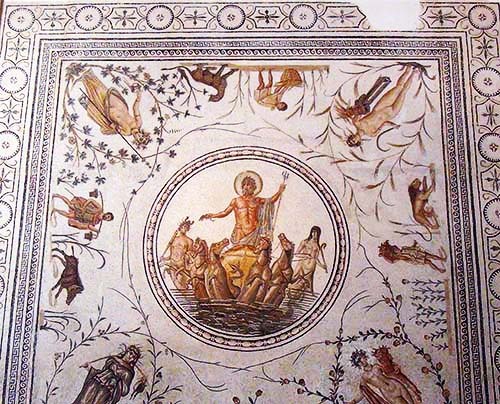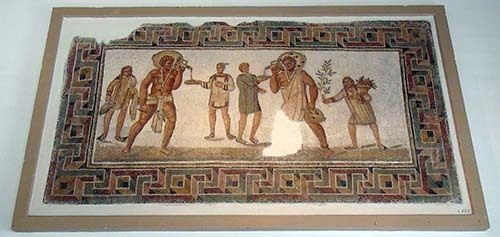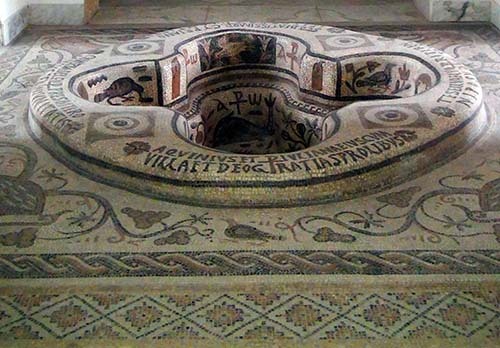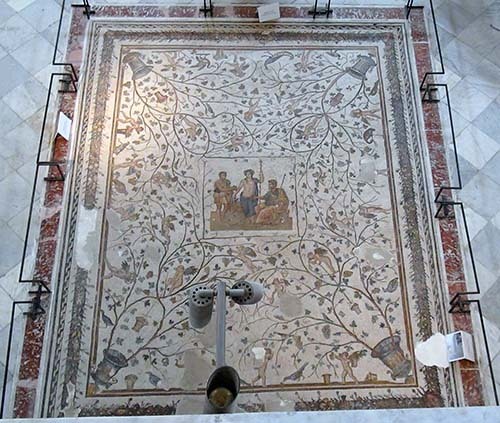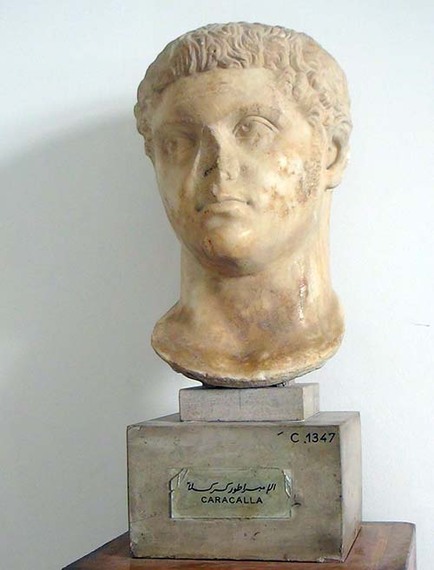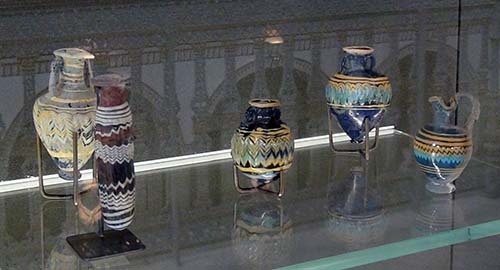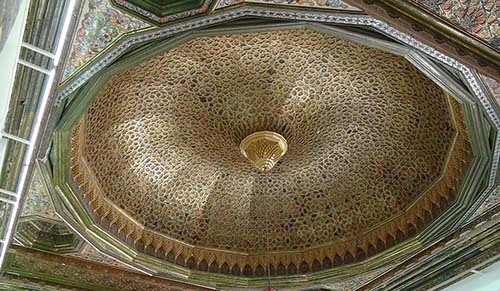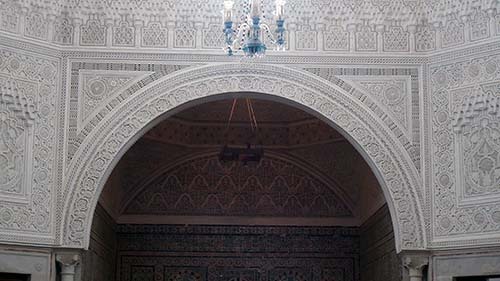
I couldn't get enough of the fabulous mosaics dating from ancient Greek times to well after the Christian era at Tunisia's renovated National Bardo Museum.
I had to revisit the museum on a very tight schedule taken up by training journalists this week.
Two previous visits limited me to the wealth of mosaics and a few statues.
A couple of trips after that I was unable to visit the museum as it was undergoing a facelift and I was short on time.
This visit I spent a good part of a free day exploring the expanded repository of various treasures spanning centuries of civilizations.
The murals, restored segments from larger pieces, and floor mosaics cover scenes of deities, mere mortals, fauna and flora, whose details were delicately assembled from colorful pieces of stone, marble and/or terra cotta.
A medallion of Poseidon's triumph and the four seasons attracts viewers to the center of a huge piece adorning one of the Bardo's countless walls.
The marble masterpiece featuring the sea god astride his chariot, accompanied by a Triton (a Greek god and messenger of the sea) and a Nereid (a sea nymph), is surrounded by different characters, animals and plants and dates back to the mid-third Century AD.
The three-story building houses some of the most exquisite and intact, or almost complete, examples of mosaics I've seen in different museums around the world.
From pre-historic treasures to Hellenistic to Roman to Christian to Islamic, the pieces depict battles, hunting and fishing expeditions, wine making and drinking parties, and a baptismal font, to name a few.
The Byzantine-era Demna baptismal font ensconced in one of the museum's alcoves comes from a 4th Century AD church in the town by the same name.
It was reassembled and renovated by the Bardo museum in 1955.
The symbolic and allegoric decoration illustrates the concept of salvation of the neophyte and admission into the Church of Christ.
The cornucopia of mosaics fills halls, corridors, and floors. Some are protected by thin metal barriers, while others occupy entire rooms' floors that visitors traverse heading from one pavilion to another.
The museum is not limited to mosaics.
Going through a hall of statues I came across a head of the Roman Emperor Caracalla who was of Punic and Syrian origin.
According to the Encyclopedia Britannica, he ruled jointly with his father, Septimius Severus, from 198 to 211 and then alone from 211 until his assassination in 217 AD.
Other marble marvels include the god Apollo, Roman Emperor Lucius Verus, and a partly amputated body of the goddess Venus.
It's difficult to miss relics representing the glory of Carthage, the ancient city that is today a suburb on the outskirts of the capital Tunis that emerged from a colony founded by seafaring Phoenicians from what is modern-day Lebanon.
A display of Carthaginian vases indicates they were used for fragrances and perfumes.
In the same hall a row of figurines representing Carthaginian goddesses from the 5th Century BC reflect Phoenician, Greek and Egyptian influence.
A plaque at the Bardo's entrance points to Tunisia's recent history of preserving national treasures that dates back to 1876, under the guidance of Kheireddine Pasha's reform-minded government.
Its aim was to inventory the country's existing museum collections with a view to creating a future museum in Tunis.
The French protectorate over Tunisia, established in 1881, was keen on preserving the country's heritage.
The following year it created the Department of Antiquities, Fine Arts and Historical Museums that was administered by France's ministry of public education but was placed under the responsibility of the Tunisian government, the plaque explained.
In 1885, the French protectorate established the Alaoui museum in the Bardo Palace "to house and conserve art works and antiquities and in general any collections useful to the study of sciences and arts."
The Tunisian ruler, the Bey, and the French Resident General officially inaugurated the museum after it was converted from a palace in 1888.
Following Tunisia's independence from France in 1956, heritage sites were protected, studied and documented by the National Institute of Archeology and Art founded in 1957.
The 11-Dinar ($6.86) entrance fee was well worth it and the 1 extra dinar ($.62) for the privilege of shooting pictures and video a small price to pay to keep lovely souvenirs of the visit.
Too bad there were no books on the museum in English or French in the gift shop. I'm glad I documented my passage with dozens of photos and video footage.
